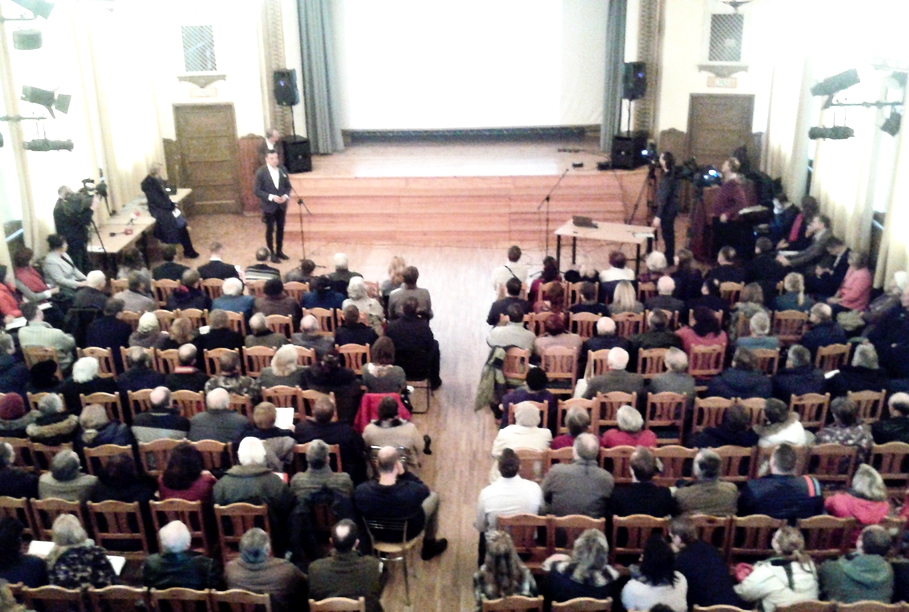At the Sēja district about a tenth of the two-and-a-half thousand declared residents arrived at the Culture Hall, with many as standing-room only attendees. They listened attentively and calmly as the project implementers first introduced all of its general aspects. A resident tweeted "no room left for all participants":
Rail baltic sab.apspriešana Sējas novadā. visiem dalībniekiem nav vietas. pic.twitter.com/nBXc3gQzXp
— Liene Barisa-Sermule (@liene_b) February 23, 2015
However, according to LR correspondent Edgars Kupčs, residents are in fact concerned regarding the project's impact upon their community. The first issue of worry is noise; project leaders promise to erect a noise-wall. They’ve got misgivings about possible spoilage to the gently-rolling wooded rural landscape, the possible sacrifice of cultural monuments.
The public discussion will go on until the middle of March in at least 15 other local governments that will be affected by the development of the Rail Baltica II.
Mārupe district seems to be presenting the biggest public relations challenge to the high-speed line’s champions, where it comes closest to more densely populated single homeowner dominated neighborhoods.
Riga is facing some of the potentially most disruptive and large-scale impact, as an essential branch connection to the international airport RIX crosses critical downtown infrastructural and cultural-historical landmarks.
The Latvian part of the line will begin at the Estonian border at Ainaži and continue through Salacgrīva, Limbaži, Sēja, Inčukalns, Ropaži, Salaspils, on the line to Riga. The connection to the capital will come through where the former dismantled rail line to Ērgļi now sits idle in Ropaži county.
The line will then go on to the Central Railway Station downtown, further crossing a brand-new bridge to the airport. Then it will continue through Mārupe, Olaine, Ķekava through to Bauska district, where it will cross over to Lithuania.
About 2000 properties will need to be bought up from their current private owners. This will require tens of millions of euro from Latvia’s projected investments into the project, which are expected to be €1.3m.





























